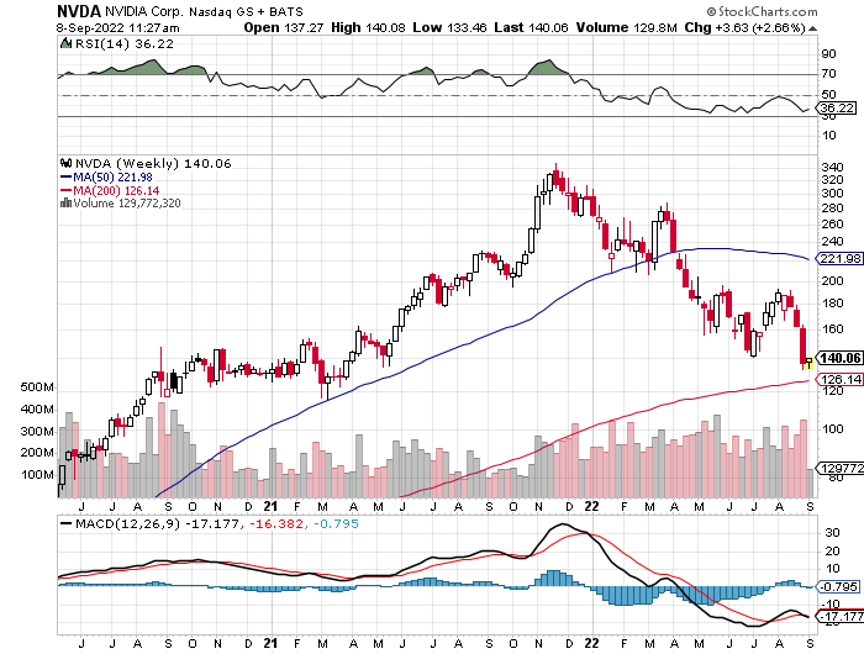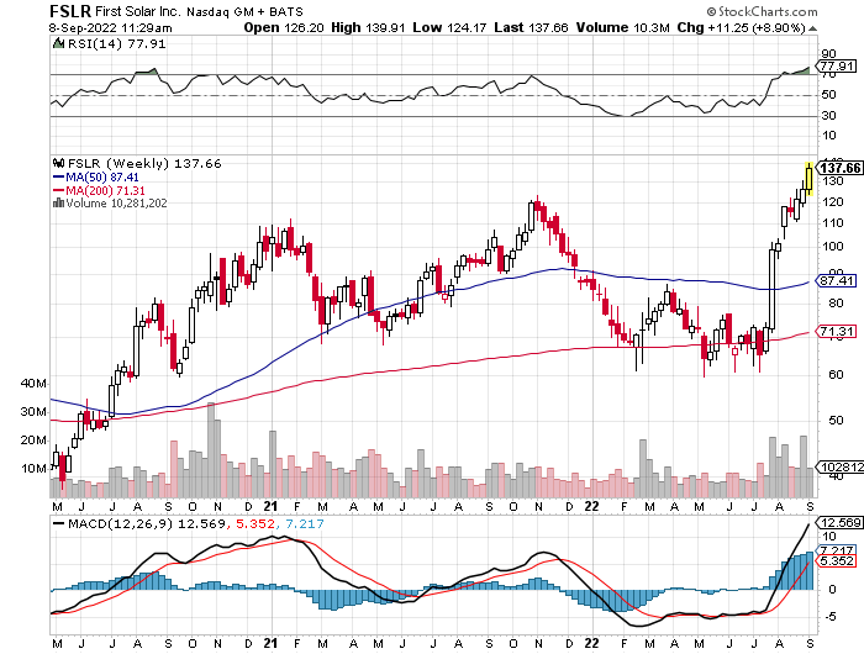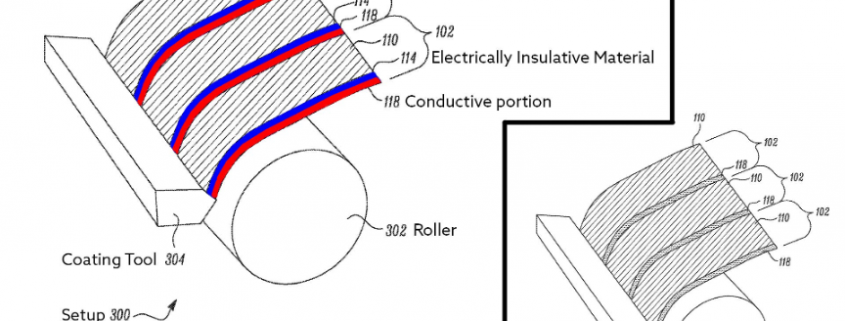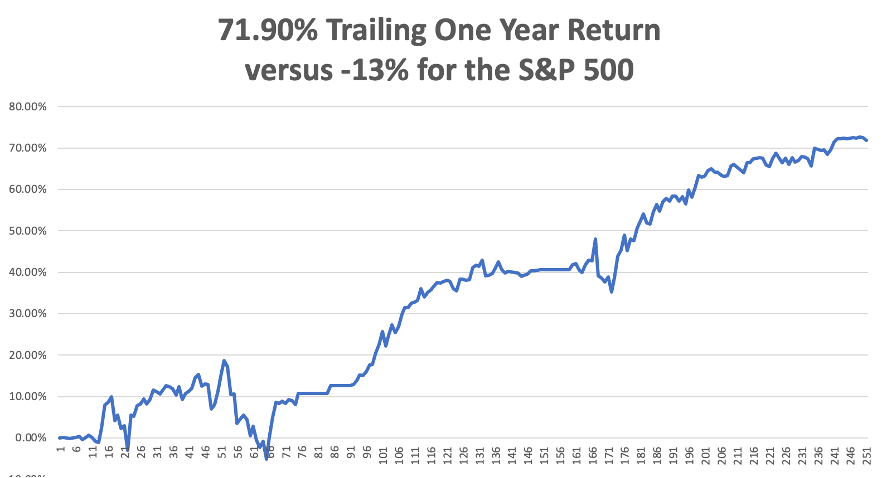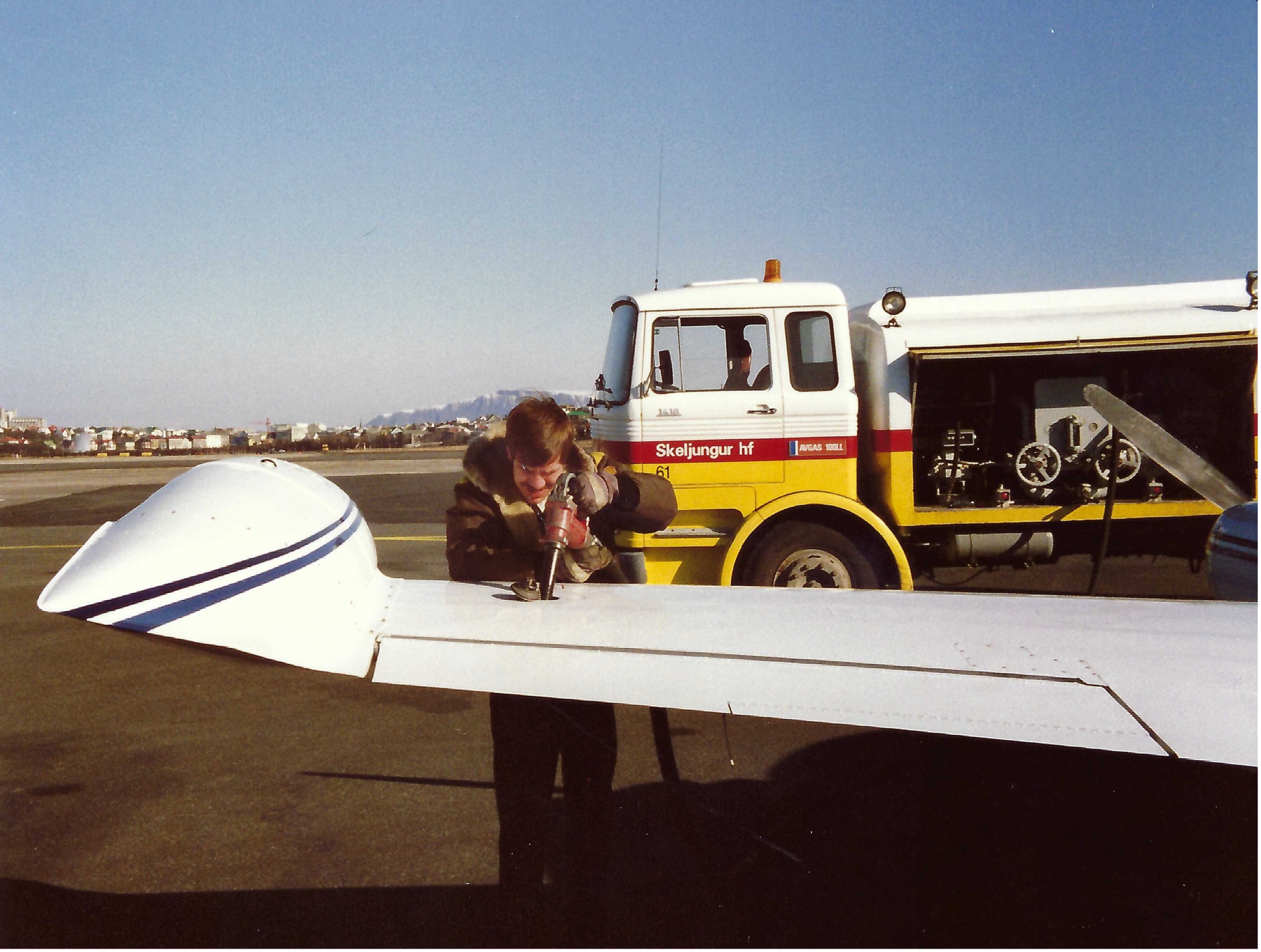Below please find subscribers’ Q&A for the September 7 Mad Hedge Fund Trader Global Strategy Webinar broadcast from Silicon Valley in California.
Q: Do you think a snapback rally has started? If so, should we increase the size of the September Microsoft (MSFT) spread?
A: Absolutely not. There is no money in 7-day-to-expiration trades. That's why you never see them from me. If you are going to do a position, we’re now looking at October, which has five weeks to run; and I'm waiting for a better entry point. One day does not make a bull market. We also have the volatility index at $25, which is not a good entry point either, so don’t double up on Microsoft here, and avoid 7-day options trades unless you want to be a day trader.
Q: What is your target for the year-end S&P 500?
A: I’m still looking at 4,800. I think we could bottom sometime in the next few weeks—the worst case is the beginning of October—and then it’ll be straight up for the rest of the year. Once we go from discounting the next CPI, which is out on Tuesday the 13th, then we have sort of a no man's land and in October, we start discounting the midterm election, which at the moment is looking like a Democratic win on all fronts.
Q: Amazon (AMZN) has been losing money over the past 2 quarters due to fuel expenses. Is the solution investment in new electric delivery trucks?
A: Yes. In fact, Amazon owns 25% of Rivian (RIVN), and their initial order was to manufacture 100,000 all-electric delivery trucks for Amazon. That has always been the basis for investing in Rivian. It’s been a fantastic investment for Amazon as a stock so far, and when Amazon goes all electric you can bet they’ll power that largely with solar energy. Then they will be out of the energy business entirely; they’ll be producing their own energy and then consuming it, which is the most efficient way to use alternatives, cutting out about 10 different middlemen.
Q: Will the UK pound perform well with this new prime minister?
A: No, the pound is being driven down by rising US interest rates and the energy crisis in Europe, and in fact, I think no matter who the prime minister is, they’re going to have a really difficult time with the economy because of Brexit, which I believe over the long term will reduce British standards of living by half. I don’t know much about the new prime minister as she was in diapers when I was living in England, but it’s a terrible place to invest for the foreseeable future for all of those reasons.
Q: Is it time to buy Tesla (TESLA) for a trade?
A: Well you know me, I’m a perfectionist always trying to buy the bottom. I’m waiting for the market to throw up on its shoes, which it just hasn’t done this year. And I did make a killing on that last move down to $210. We then went up to $310. So, I'm sitting here, 100% cash, waiting to go 100% into Tesla again. It just seems to be a money-making machine for me, and the good news about the company just keeps coming every day.
Q: What strategy would you recommend for income?
A: I would go short dated. 2-year papers now paying 3.5%. I would not go long dated at all, that would be just throwing your money away. Locking in a 3.5% yield for 10 or 20 years would be a perfect money destruction machine. So, go to 2 years, which is essentially going to cash. At least you’ll get the 3.5% with no volatility.
Q: Prediction for the midterms?
A: I’m looking for a Democratic sweep. I analyzed all 33 Senate seats last night that are up for grabs and the Democrats could pick up 2 or even 3 seats. The weak candidates the Republican party has put forward in the most important states are performing very poorly in both fundraising and the polls.
Q: When do you think would be a good time to buy a house for your personal residence?
A: I would say the next time they start to cut interest rates in a couple of years. That is when housing takes off again. I was actually researching this just yesterday—the worst housing crisis we had in 100 years, you had a bear market for houses that only lasted 2 years. That was of course the 2008-2009 disaster driven by massive overbuilding of speculative housing. We haven't had that happen this time. And in fact, we’re short 10 million houses because the capacity cutbacks that happened in ‘08 and ‘09 never recovered. So, I’m kind of thinking, you don’t get crashes in real estate prices now, you get flatlines, and then they take off again because everybody in the world now has 2.75% interest rates and if they sell their house and move their cost-of-living doubles because their mortgage interest rate doubles. So we’re all kind of trapped in our houses now and can’t sell because the alternatives are so much more expensive. That takes enormous pressure off the real estate market, which leans in favor of the flat market thesis.
Q: Do you still love Nvidia (NVDA)?
A: I still love Nvidia. They’ll make up the China losses in no time. And by the way, guess who else uses Nvidia chips? The HIMARS missiles, where demand has suddenly rocketed from 3,000 to 14,000 missiles a year, which is more than the Chinese were ever going to use, and we’re using those up very rapidly by giving them to Ukraine. Every time one of those missiles gets fired uses a whole batch of Nvidia AI cards. So use this dip to load the boat, you’re looking at 20% of downside and maybe 300% of upside on Nvidia on a three-year view. NVIDIA is now down 58% from its high so averaging anywhere around here is fine.
Q: Can you suggest a hedge for the next 4-6 weeks?
A: The only hedge that works is cash. I’ve tried a million hedging strategies over the last 50 years, and the only thing you can rely on is cash. And by the way, cash actually pays you money now. You can earn 2% in interest or more if you’re going to deposit it with a broker.
Q: With electricity shortages already happening, what electricity infrastructure company would you be looking at for investing in the future of EVs?
A: I’ve been investing based on exploding electric power costs myself for the last 15 years. A lot of my plays like SunPower (SPWR) and First Solar (FSLR) have already had enormous moves. That said, I’d use any weakness in the market to buy those on dips because one thing we know for sure is that alternative electricity demand is going to be soaring over the next several years as oil and gas are phased down to zero. And of course, the whole sector got a huge push from Vladimir Putin, who’s massively bringing forward the shift to alternative because he’s using carbon-based energy as a weapon of war against us now.
Q: What’s a good entry point on Nvidia?
A: I tell people to start scaling. A perfect scale would be, let’s say, if you want to put $100,000 into Nvidia, break it up into 10 $10,000 pieces, put in $10,000 today and $10,000 every day until you have a full position, and then you get a nice low average. This is what the companies themselves do when they’re buying their own stock—they just buy small pieces every day to minimize the market impact.
Q: How do you see the Euro?
A: Down 10% in another year, because Jay Powell is going to keep raising interest rates. And even if he doesn’t and the next rate rise is the last one, we’re still going to have interest rates 3.5% higher than everyone else in the world for at least 1 or 2 years, so you could easily get another 10% against all the currencies and maybe more. The outlook for foreign currencies: grim. Outlook for dollar: great.
Q: What about the Porsche (POAHY) IPO?
A: I always avoid IPOs because they get overhyped at the beginning, prices get too high, and then when the restrictive stock comes off, everybody dumps. So wait. I did that with Tesla. Tesla was overhyped—it had a $15 IPO price that went straight up to $30 on opening day. I waited for it to back off to the original IPO price and that’s when I went in and split-adjusted that price which today is $2.35.
Q: Wouldn’t it be good to pick up the speculator houses that aren’t really selling even 50% down with a 5% mortgage?
A: If you could get them 50% down, that would be great; but I don't think any place in the country has seen a 50% drawdown yet—maybe 5% or 10%. The markets that will have the biggest drops will be rural markets that saw the biggest increases, and I’m thinking specifically about Boise, Idaho, where prices doubled in two years, and then they’ll give up a major piece of that. That's where you’ll see the biggest declines the fastest. But, for your bigger quality markets like New York and San Francisco, they went down maybe 5% at worst, and then they go back up again. The only selling you have now is demographic selling, where people die, get married, have more kids and need to change houses for those reasons.
Q: On the electric power side, any thoughts about Clean Sparks (CLSK)?
A: I would be careful not to buy things just because they are “electrical”. You have to be discriminating in your alternative power plays because a lot of these will never make money. In the case of (CLSK), they have yet to make any money and the stock is down 90%. They are in low-margin businesses. Buying electric power and reselling it for charging stations is not a high-margin business. You’re in competition with your local utilities and unless you have something special about your business model, like putting them in shopping malls like Tesla does, the added value there is not that great. I would look very carefully at their business plans and figure out if they’re actually going to make money doing this. Tesla has the perfect model— a giant 20,000 charging station network that only Tesla cars can use, and they’re making the cars that use the power and the panels that generate it and the batteries that store it. It’s a fully integrated vertical model. Remember, anything entering alternative anything now is competing against Tesla, which has a 15-year head start and a dominant market share. So, that is the issue there.
Q: What is the risk of a European crisis and how is that going to affect the US?
A: It is going to affect the US, and we don’t have to wait for a crisis—there's one happening now. I looked at the numbers this morning, and the average British household is looking at a $4,000 annual power bill this year against a per capita income of $47,000 pretax, and their taxes are much higher than ours. Moreover, this is for a country that is a net energy producer. It’s going to be double that cost in energy-consuming countries in eastern Europe and Germany. About ⅓ of all US exports go to Europe, so yes it will affect us but we’ll have to see how it plays out.
Q: What’s your forecast for profit margins for next year?
A: I’m looking for S&P 500 earnings of 10% for 2023. That may be one reason why stocks keep failing to break down.
Q: Would a price cap on oil prices raise the price of oil?
A: No, it’s having the opposite effect, making oil go down; and you’re seeing this at the free market price, which is the price at which Russia is selling their oil to China and India. That’s happening at a 20% discount to market, so all the Russian oil going to China now is happening at $12 below the current spot price for oil, which is around $82.
Q: How about Nuclear energy plays?
A: Yeah, we did put out one recommendation for Cameco (CCJ) in the spring. I’m still buying that on the dips. Germany resuscitated three nuclear power plants, California one, and Japan is doing the same. Of course, France is sitting pretty—they already have 75% of their electric power coming from nuclear. Who ever knew the French would outsmart the Germans? But betting your energy future on Russia was a terrible idea, and only happened because a lot of key German politicians were bribed by Russians. So yes, oil is dropping and you should expect it to continue.
Q: Did we just see the peak in interest rates for the year?
A: No, at a minimum we’re looking at 3.50% on the yield. We were 3.35% yesterday but could easily overshoot to 3.60% or 3.70% which is why I’m being a little cautious jumping in on the long side here.
Q: When is the time to do LEAPS on Freeport McMoRan (FCX)?
A: Soon. If we can double bottom at around $24, that would be great LEAP territory because I expect in 2 to 3 years this will be a $100 stock and a good LEAPS to do here. If we get down to $24, then you really want to look hard at doing something like a $30/$32, because then you could get like a 500% return on that maybe a year or two out. The leverage in LEAPS is astronomical as many of you discovered with my (TLT) put LEAPS last year. If you want more specific information about LEAPS, please sign up for my Concierge service.
Q: When will you send out LEAP recommendations?
A: On a cataclysmic capitulation selloff day—that is the time to do them.
Q: If Tesla does attempt to raise more capital with new share issues, will that drive the price down?
A: Yes, that's usually what happens, but Elon Musk is a great market timer, and you can bet that he’ll wait for a massive run-up in the stock first before he does this. Every one of these capital races he’s done has been after a massive run-up in the stock and then it tends to cap the stock for 6 months after that. You can safely buy it now because Elon doesn’t think the stock has topped out yet, since he hasn’t announced any new secondary equity issues yet.
Q: What is the actual cause of the surge in natural gas prices?
A: The complete shutoff of natural gas flows from Russia to Europe, especially Germany, which used to get 55% of its total natural gas from Russia.
Q: What is your take on the current Ukraine situation?
A: Ukraine is winning—they’re doing it slowly. The US has quadrupled production of the HIMARS missiles, from 3,000 a year to 14,000 a year, and that has made all the difference in the world. Ukraine has been able to take the upper hand in this war because of literally just 16 vehicles we gave them to fire these missiles. My guess is it goes on for another year, there's a coup in Russia, Putin gets assassinated or deposed, giving us a new government in Russia, and Ukraine gets all its old territory back, joining NATO and the EC.
Q: Thoughts on Google (GOOGL)?
A: Good long-term hold but could be an antitrust target in the near future.
Q: Some say energy will be in critical shortage for many years. Why are you long-term bearish on energy/oil?
A: You have to separate the two; I’m long-term bullish on energy, which is why I built this massive solar system. But oil will be illegal within a decade—that you can count on. Demand will go to zero. It won’t be governments that do this, it’ll be the market. By the way, we’ve already gone to zero once before. If you look at the Spring of 2020, we had negative $37 in the futures market on oil. This is not some far-out thing—the zero prices will just come back. On the way to zero though, you will get several doubles, triples, and quadruples in the price. The smaller the market becomes, the more volatile the price becomes; oil is no exemption from that. That’s why Elon Musk says we need to increase our oil production for the short term to get ourselves on the way to zero—you have to do the transition. The problem is that nobody wants to make 30-year investments in a product that is going to be banned in eight years, hence the shortages.
Q: What's a flight-to-safety asset right now?
A: There are three: Cash, cash, and cash.
To watch a replay of this webinar with all the charts, bells, whistles, and classic rock music, just log in to www.madhedgefundtrader.com, go to MY ACCOUNT, click on GLOBAL TRADING DISPATCH, then WEBINARS, and all the webinars from the last 12 years are there in all their glory.
Good Luck and Stay Healthy,
John Thomas
CEO & Publisher
The Diary of a Mad Hedge Fund Trader
Teslas are Great, but they are not Crash Proof





